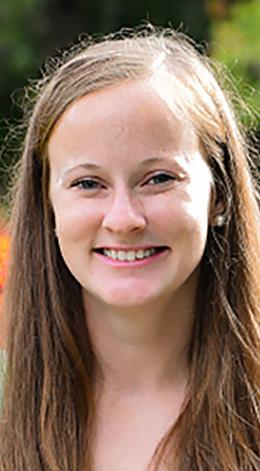
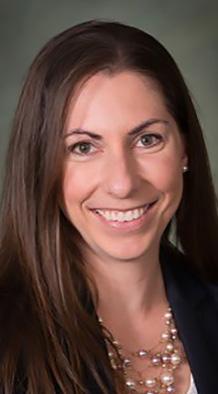
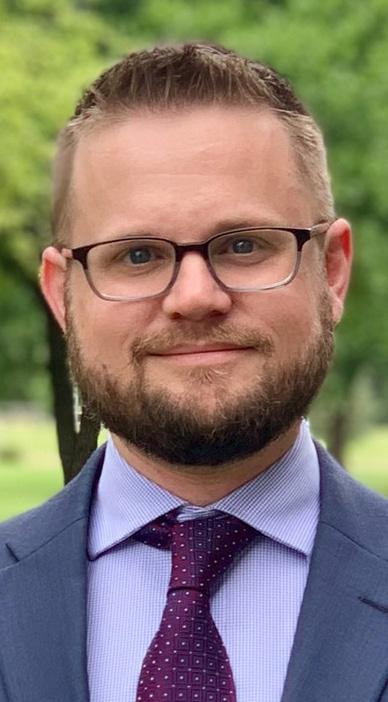

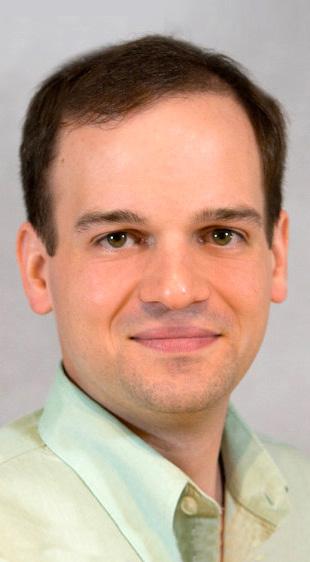
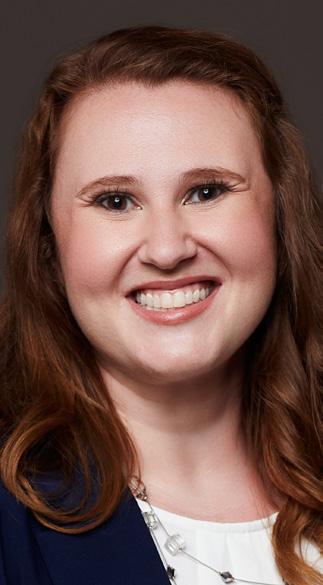
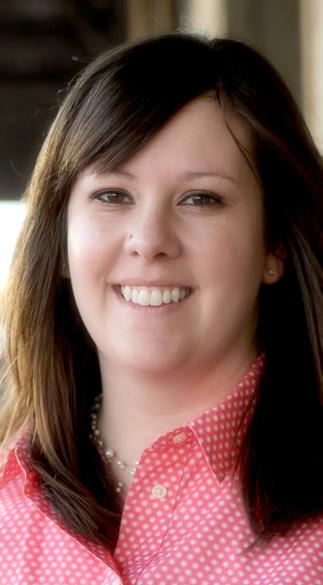
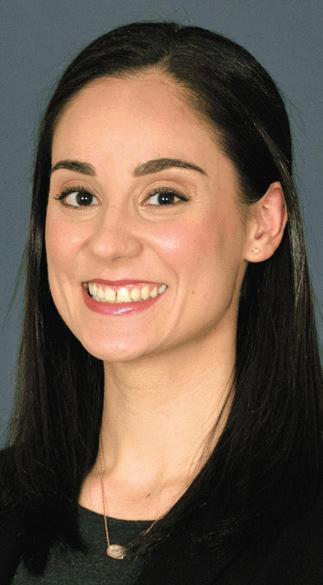





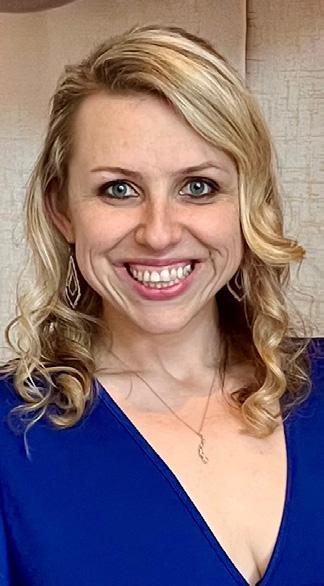





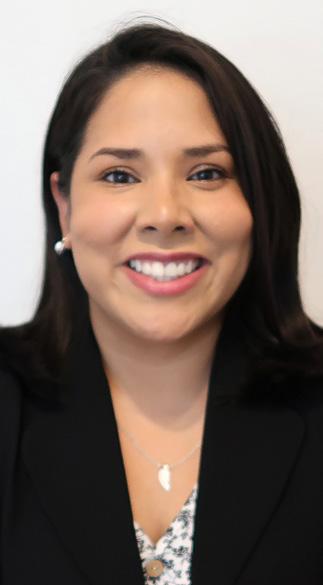
Texas Society of Certified Public Accountants NOV DEC 2022TODAY’S CPA Special Pullout: Practice Management Report ESG Continues to Be in the Spotlight What is Fuzzy Matching? Blockchain: The Architecture Underlying Crypto Assets TXCPA’S 2022 RISING STARS

CHAIR
Sheila Enriquez, JD, CPA, CFF, CVA
PRESIDENT/CEO
Jodi Ann Ray, CAE, CCE, IOM
EDITORIAL BOARD CHAIR
Baria Jaroudi, CPA
Staff
MANAGING EDITOR
DeLynn Deakins ddeakins@tx.cpa 972-687-8550 800-428-0272, ext. 8550
TECHNICAL EDITOR
Brinn Serbanic, CPA, CFP® technicaleditor@tx.cpa
COLUMN EDITOR

Don Carpenter, MSAcc/CPA
WEB EDITOR

Wayne Hardin whardin@tx.cpa
CONTRIBUTORS
Melinda Bentley; Kenneth Besserman, JD; Roxanne LaDu; Holly McCauley; Craig Nauta; Kari Owen; April Twaddle
CHIEF OPERATING OFFICER
Melinda Bentley, CAE
CLASSIFIED
DeLynn Deakins
Texas Society of CPAs 14651 Dallas Parkway, Suite 700 Dallas, Texas 75254-7408 972-687-8550 ddeakins@tx.cpa
Editorial Board
Arthur Agulnek, CPA-Dallas; Shivam Arora, CPA-Dallas; Derrick Bonyuet-Lee; Aaron Borden, CPA-Dallas; Don Carpenter, CPA-Central Texas; Melissa Frazier, CPA-Houston; Rhonda Fronk, CPA-Houston; Brad Gold, CPA-Houston; Aaron Harris, CPA-Dallas; Baria Jaroudi, CPA-Houston; Elle Kathryn Johnson, CPA-Houston; Jennifer Johnson, CPA-Dallas; Joseph Krupka, CPA-Dallas; Nicholas Larson, CPA-Fort Worth; Anne-Marie Lelkes, CPA-Corpus Christi; Alyssa Martin, CPA-Dallas; Bryan Morgan, Jr, CPA-Austin; Stephanie Morgan, CPA-East Texas; Kamala Raghavan, CPA-Houston; Amber Louise Rourke, CPABrazos Valley; Barbara Scofield, CPA-Permian Basin; Nikki Lee Shoemaker, CPA-East Texas, CGMA.


Design/Production/Advertising Media By Design, LLC, mediabydesign@gmail.com
COVER STORY
Rising Stars
FEATURE
Continues to Be in the
as
Move to
© 2022, Texas Society of CPAs. The opinions expressed herein are those of the authors and are not necessarily those of the Texas Society of CPAs.
Today’s CPA (ISSN 00889-4337) is published bimonthly by the Texas Society of Certified Public Accountants; 14651 Dallas Parkway, Suite 700; Dallas, TX 75254-7408. Member subscription rate is $3 per year (included in membership dues); nonmember subscription rate is $28 per year. Single issue rate is $5. Periodical postage paid at Dallas, TX and additional mailing offices. POSTMASTER: Send address changes to: Today’s CPA; 14651 Dallas Parkway, Suite 700; Dallas, TX 75254-7408. To request article reprints, please email ddeakins@tx.cpa
DEPARTMENTS
Advocacy Day and Midyear Board of Directors Meeting, Month of Service, Rising Stars Nominations, 88th Texas Legislative Session Preview, and Leadership Nominations Results
VOLUME 50, NUMBER 3 NOVEMBER / DECEMBER 2022
22 CPE Article Blockchain: The Architecture Underlying Crypto Assets COLUMNS 4 Chair’s Message Check Out Our Rising Stars! 6 Accounting & Auditing ESG
Spotlight
Regulators
Enforce Transparency 9 Technology Issues What is Fuzzy Matching? Why CPAs Should Know About This Powerful Tool
13 Take Note TXCPA’s
29 CPE Quiz 30 Classifieds CONTENTSNOV DEC 2022 PAGE 6 PAGE 22 PAGE 9
17 TXCPA’s 2022
Meet the Rising Stars honorees for 2022 Today's CPA November / December 2022 3
CHECK OUT OUR RISING STARS!
By TXCPA Chair Sheila Enriquez, JD, CPAHouston, CFF, CVA

Your November/December issue of Today’s CPA is here and it sure looks good! Whether you’re reading the print copy from your mailbox or clicking through the digital version at www.todays.cpa, we know you’ll enjoy reading more about the energetic and happy faces gracing the cover. These are our 2022 Rising Stars – the future of our profession.
You can read their individual profiles in the cover story of this issue. We send our heartfelt congratulations to these 20 young CPAs on this welldeserved honor. We look forward to watching them continue to shine!
Who do you know in your network, firm, company or community who is worthy of recognition as a 2023 Rising Star? Help us honor these up-and-comers by submitting a nomination through our simple online process at www.tx.cpa. The deadline is December 15, 2022.
Let’s Connect
I’d love to hear your feedback and answer your questions. Send me a note at chair@tx.cpa.
We have two other important programs coming up. Our first ever CPA Week is planned for November 7 – 18. In partnership with AICPA and at least 35 state CPA societies, we’re putting members in classrooms across the country to talk about this dynamic profession. We’re also asking you to share your stories on social media. Keep an eye out for more details at www.tx.cpa and in your member communications.
Also coming up is our annual TXCPA Month of Service in December. This is a great time of year to mobilize our 28,000 members to give back to their communities with financial literacy education and service. Contact your chapter to find out how you can be involved in planned outreach near you or visit the TXCPA website to find resources to prepare for outreach on your own.
We are thankful for you and this professional community, and we wish you the best this holiday season!
CHAIR’S MESSAGE
4 Texas Society of CPAs
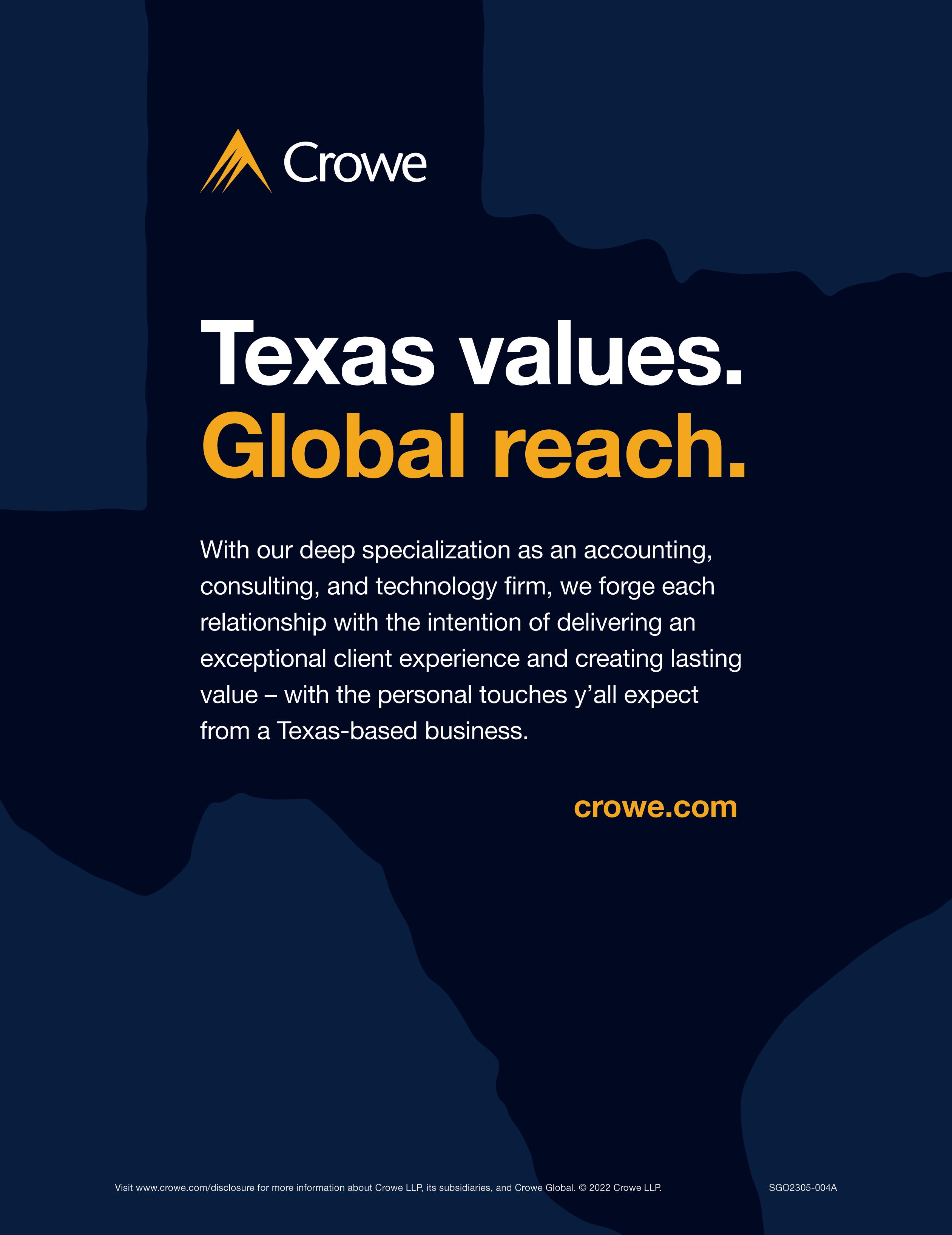
ESG
Continues to Be in the Spotlight as Regulators Move to Enforce Transparency
It is evident that the focus on environmental sustainability, climate change and equitable business practice is intensifying. We have featured issues related to this important area in the column twice this year (see “Sustainability Reports Rapidly Becoming Expected Disclosure” in the March/April issue and “SEC Proposes Controversial Rules Requiring Climate Related Disclosures” in the May/June issue).
Shareholders are increasing their demands regarding insight into the impact business decisions have on climate and the environment, as well as its effects on community structures and equity. In response, an emerging sector of the financial market is developing to allow investors to tailor their portfolios to meet their environmental, social and governance (ESG) priorities.

Several recent enforcement actions on the part of governmental agencies spotlights the fact that as investors
put emphasis on this area, regulators will as well. (See TXCPA’s 2022 Accounting Industry Outlook Report in the July/August Today’s CPA issue for insights on ESG initiatives.)
In April, the Federal Trade Commission levied penalties totaling $5.5 million against Wal-Mart, Inc. ($3.0 million) and Kohl’s, Inc. ($2.5 million) for marketing bamboo products as eco-friendly, which were in fact bamboo-derived rayon products. The environmental claims were the basis for the deceptive trade practice penalties as the process of converting the bamboo to rayon requires toxic chemicals resulting in harmful pollutants.
In addition to the penalties, the retailers have to cease claiming that the products are bamboo unless it can be substantiated and to stop marketing the products as environmentally friendly.
In May, on the heels of the FTC penalties, the Securities and
By Don Carpenter, MSAcc/CPA
Exchange Commission (SEC) assessed a $1.5 million penalty on BNY Mellon Investment Advisor for misstatements related to ESG targeted investment policies governing certain mutual funds. The case highlights the practice of “greenwashing” or asserting undocumented claims that products (in this case mutual funds) are environmentally friendly.
The advisor could not document that it had conducted the quality reviews it asserted had been made on funds purporting to contain environmentally responsible investments.
A week after the SEC penalty was announced, German authorities initiated a similar greenwashing investigation of DWS Group, the asset management subsidiary
ACCOUNTING & AUDITING
6 Texas Society of CPAs
of Deutsche Bank AG, asserting investment fraud. Due to its relationship with U.S. markets, the SEC is joining in this investigation.
Concurrent with the announcement of the above penalty, the SEC also released two proposed rules addressing the substance of this issue. The first addresses misleading or deceptive fund names. Currently, if a fund name suggests that its focus is on a particular type of investment, it must adopt a policy to invest at least 80% of the fund’s value in such investments.
The proposed new rule would extend this requirement to include funds that target investments with specified characteristics. Such characteristics could include such terms as “value,” “growth” or “tax-exempt.” But it would also include characteristics referring to “environmental,” “social” or “governance” factors. The 80% requirement is determined at the
time the fund makes an investment.
If the 80% investment threshold is not met later, future investments must be made under a methodology that would bring the fund back into compliance.
The rule specifically discusses deceptive or misleading use of ESG terminology in fund names. The discussion focuses on “integration funds” that incorporate ESG factors alongside other non-ESG criteria. In many cases, the ESG factors carry no more weight than the other factors and are therefore not determinative. In such cases, using ESG terminology in a fund’s name would be deemed misleading.
A second rule would require investment advisors to provide more specific disclosures in fund prospectuses, annual reports and advisor brochures to address ESG strategies. If a fund is identified as seeking certain ESG impacts, it would be required to describe the specific impact, as well as regular updates on the progress toward that goal.
the advisors vote a major portion of the fund’s shares in the portfolio companies via proxy.
In addition, they may meet with management of the companies. If either proxy or management meetings are deemed significant to achieving the fund strategy, the fund must also disclose how it engages with the portfolio companies to achieve its objectives.
Also in May, the Financial Accounting Standards Board (FASB) announced that it is considering new rules regarding accounting for financial instruments with ESG features or credits. The project will address recognition, measurement and disclosure for programs that generate ESG related credits such as cap-and-trade, carbon offset credits or renewable energy credits. The scope will initially be limited
Related
Governance?
For example, if greenhouse gas emissions (GHG) were the focus of a particular fund, disclosure of the specific emissions, targeted reduction goals and regular disclosure as to the progress toward that goal would be required. Arguably GHG disclosure will become more readily available as the SEC requirements for registrant reporting on such emissions become effective (see May/June article referenced above).
As part of the additional disclosure, fund advisors would be required to give investors insight into how advisors use their influence with the portfolio companies to achieve the stated ESG goals. Generally,
to credits that can be traded and excludes tax credits or incentives.
It is apparent that a new level of complexity is rapidly emerging with regard to the impacts businesses have on society and the environment. Enterprises would be well served to understand the implications of these new rules and regulations on their operations, perception of these operations with customers and suppliers, and their ability to raise capital.
About the Author: Don Carpenter is clinical professor of accounting at Baylor University. Contact him at Don_Carpenter@baylor.edu

CPE: Webcast - ESG 101: What is Environmental, Social and
Today's CPA November / December 2022 7
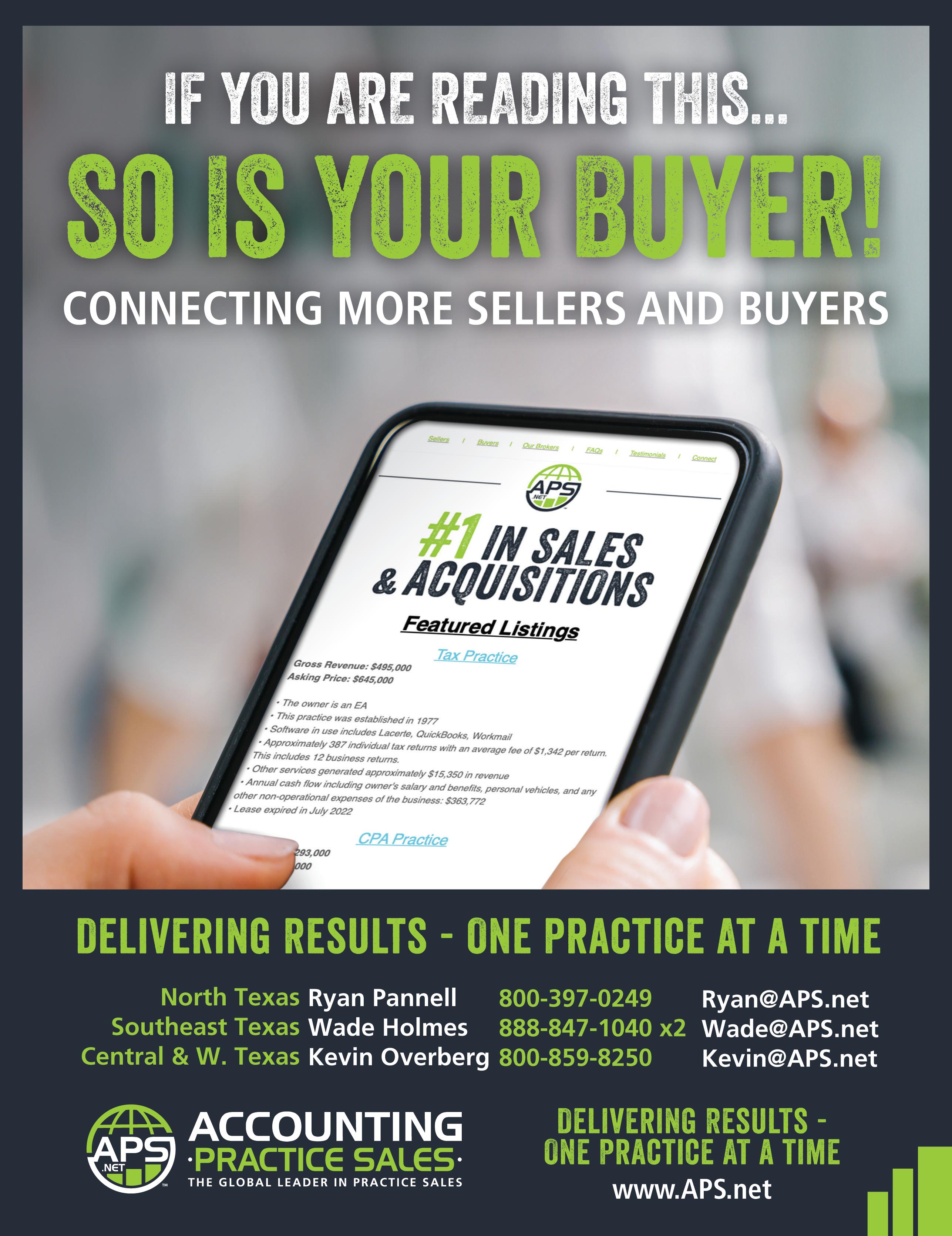
What is Fuzzy Matching? Why CPAs Should Know About This Powerful Tool
By Shivam Arora, CPA
In accounting, we regularly encounter situations where work is being performed manually and there is substantial scope of automation. For example, a CPA was downloading sales tax permits for their client’s vendors to perform scoping for potential tax refunds. After downloading a permit, they would move it manually to the respective vendor’s folder.
This process, they complained, took hours of their time, especially since multiple state permits had to be downloaded per vendor. However, the even more frustrating fact was that all file names “almost” contained their vendor’s name, with omissions of letters and additions of special characters that did not seem to follow any one pattern.
This is a common problem. There are many business cases where practitioners spend time over text matching tasks that are intuitively obvious but do not follow a pattern and therefore, must be performed manually. Fortunately, solutions exist, such as fuzzy matching.
Fuzzy Matching
Fuzzy matching encompasses an umbrella of statistical techniques that compare and match approximately equal strings. These techniques employ statistical rules

to arrive at a relative degree of truth on the similarity between two strings, in contrast to a Boolean approach, which uses a separate, hard-coded format for each task to provide a Yes/No answer.
The concept of fuzzy matching is analogous to the substance over form principle in accounting. It’s the same reason why passthrough entities do not pay income tax even though they are technically separate legal entities to their owners or why the IRS sometimes classifies unusually large salary payments to owners as dividends even though they are technically salary payments.
Fuzzy matching, like these cases, gives preference to substantial equivalence between strings over their technical form.
The Underlying Logic
There are several approaches available to fuzzy match data, but I'm going to go briefly over the most common one. The Levenshtein Distance (LD) is commonly used to establish similarity between two strings. It is the minimum number
of single character edits that are required for changing either of the two strings into the other. An edit can refer to a character’s insertion, deletion or replacement. Consider the following strings: charlie_vendor $charl_vndr$
Assume that the naming convention of vendors in a system is “{name}_ vendor.” It is intuitively obvious that the file downloaded is for the vendor Charlie. However, unless all downloaded files follow the same naming convention as above, a Boolean approach to matching will declare both strings unequal.
When I run LD-based fuzzy matching (LDFM) in Python, I get an LD of 6. This means that the shortest number of single-character changes to exactly match the file name and the vendor’s name is 6. Converting it into the LD ratio (using a formula I will not delve into), I obtain .77.
What I now have is a quantified degree to which both strings are similar: my computer understands that both strings are about 77% similar. It still knows that they are
TECHNOLOGY ISSUES
Today's CPA November / December 2022 9
TECHNOLOGY ISSUES
not equal; it has just established equivalence.
Applications of Fuzzy Matching in Accounting
There can be several applications of fuzzy matching in accounting. A few of them follow.
File Renaming. As with the above case, fuzzy matching can be used to rename downloaded files and match them to their respective group. Names of files downloaded from the internet often contain either truncated text or unwanted characters.
Support Accounting Processes. Fuzzy matching can support accounting processes such as bank reconciliations, inventory tracking and evidence gathering for various types of audits.

Internal Controls. Fuzzy matching can detect duplicate AP payments with minor variations, compare purchase orders to deliver invoice/bill of lading and enforce data entry checks. In case of fraud, it can also aid in identifying matches across different databases or comparing fraudulent acts across different time periods.
Preprocessing for ML. With the arrival of artificial intelligence, organizations are increasingly utilizing machine learning (ML) techniques. A substantial amount of ML in the financial space occurs on data generated by
and there is little clarity on what technique is used. A better alternative may be the programming language Python.
Python is a high-level programming language that is general-purpose; it can be used to code for a wide variety of situations. The beauty of Python is that it is intuitive and relatively easy to learn, which is why it is used extensively in business. It hosts numerous libraries that are specifically designed for business-related tasks.

Case Examples
accounting systems. By facilitating preprocessing of data using fuzzy matching techniques, organizations can develop robust and accurate ML models.
A Coding Exercise
One can perform fuzzy matching in Excel (refer to the article "Excel: Fuzzy Matching" by Bill Jelen in Strategic Finance magazine). Unsurprisingly though, the functionality is extremely limited
Consider the below as examples of how helpful fuzzy matching can be for accountants and auditors.
1. A CPA is performing a quarter-end bank reconciliation. There are 300+ entries on both sides. The CPA notices that transaction descriptions on bank statements are similar to those in the books, albeit with expected differences such as truncations, word order and unwanted characters. Using LDFM, the CPA can match 270 transaction descriptions between the bank and the books. The CPA also verifies that
10 Texas Society of CPAs
the corresponding amounts across these transactions are equal.
The CPA now begins to reconcile the remaining few transactions on both sides. Using fuzzy matching has greatly reduced the manual workload.
2. A tax consultant is working on a reverse audit for one of their clients. The consultant must download sales/ use tax permits for the client’s 500+ vendors to ascertain the type of permits held in the relevant states.
For simplicity, assume that a single file contains all permits for one vendor. The consultant has an Excel file with a list of all vendors. Instead of manually linking each vendor to their corresponding permit, the consultant employs LDFM. This results in a >90% confidence match for 460 vendors.
After a cursory review of the matches to ensure accuracy, the consultant needs to only focus on the unmatched vendors for linking permits manually. If it takes 30 seconds for
they have just reduced the task time by close to four hours.
3. One warehouse of a manufacturing company uses LDFM to compare raw materials ordered on a purchase order to those received and listed on the invoice. This helps the warehouse detect not only discrepancies between the quantity of items ordered, but also between their type.
Over the years, the warehouse has been able to reduce purchase return-related costs by up to 40% by refusing delivery of suboptimal orders. You can read the outstanding use case of fuzzy matching in fraud examination in an article written by Ehsanelahi in Data Ladder titled "Fuzzy Matching 101: Cleaning and Linking Messy Data."
A Powerful Tool
Given the nature of accounting work, fuzzy matching techniques can be a powerful tool in a CPA’s arsenal.
Fuzzy matching can be performed in Excel but is much more powerful when performed in a programming
development, has extensive use cases in a business setting.

As evident, it is not hard to follow most (if not all) aspects of the Python exercise above even without basic knowledge of the language. CPAs should consider learning a programming language to automate much of the manual tasks they perform.
About the Author: Shivam Arora, CPA, is a data scientist. Arora holds dual master’s degrees: an MS in Accounting and an MS in Business Analytics. As an applied Artificial Intelligence (AI) consultant at one of the largest consulting firms in the world, Arora specializes in applied AI for accounting and finance. Research interests include financial modeling and statistical relationships in the financial markets, application of AI to accounting and Robotic Process Automation (RPA). Email shivam. arora@mavs.uta.edu.
Editor's Note: For more information on AI, check out TXCPA's CPE program Artificial Intelligence

Today's CPA November / December 2022 11
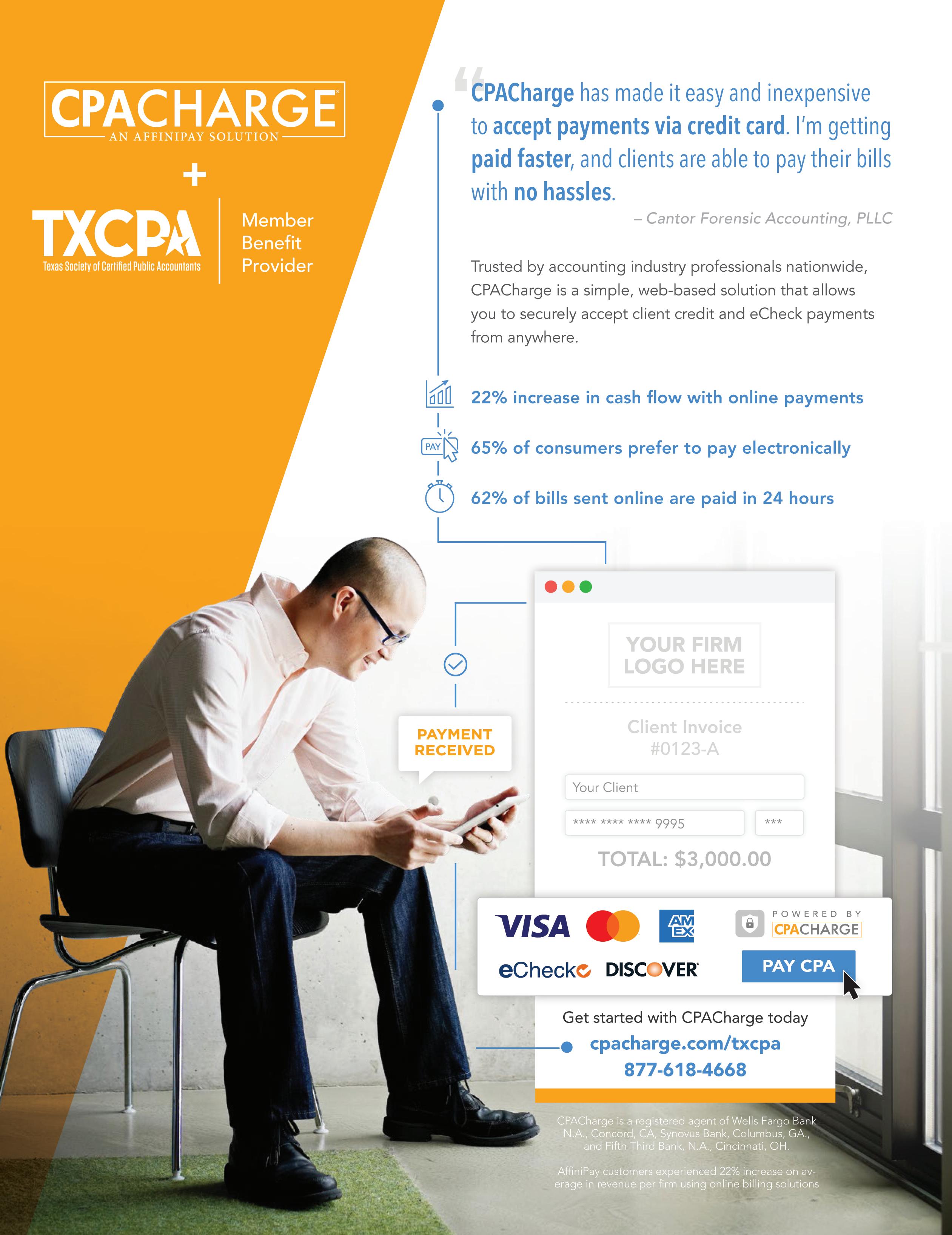
Make Plans to Attend TXCPA’s Advocacy Day and Midyear Board of Directors Meeting in January
TXCPA’s 2023 Advocacy Day and Midyear Board of Directors and Members Meeting will be held on Tuesday and Wednesday, January 24-25, 2023, in Austin. Attendees will hear legislative updates during the Advocacy Day program and are encouraged to visit legislators and legislative staff at the Texas Capitol to discuss critical business issues.
Go to the Leadership Meetings area of TXCPA’s website for more details about the meeting.
Accommodations
Sheraton Austin Hotel at the Capitol 701 East 11th St. Austin, TX 78701
Rate: $235 + & 15% tax
Discount cutoff date: January 4, 2023 Check-in: 3 p.m. | Check-out: 12 p.m.
Attendees are encouraged to reserve a room early to ensure availability
December is TXCPA Month of Service
Financial literacy is a focus area for service and education during TXCPA’s annual Month of Service in December. Contact your chapter for local engagement opportunities or visit TXCPA’s website to learn more about how you, your firm or your company can participate. We look forward to sharing the good work our members are doing in their local communities!
Leadership Nominations Results for 2023-2024 Positions
The following individuals were nominated for terms beginning June 1, 2023, and have consented to serve, if elected by the TXCPA members. Election of officers, directors-at-large, members of the Nominations Committee, and members of the Executive Board will be conducted through an electronic ballot sent to members in November.
Officers
Mohan Kuruvilla (Houston), Chairelect (Chair 2024-2025)
Christi A. Mondrik (Austin), Treasurer-elect (Treasurer 20242025)
Josh H. LeBlanc (Southeast Texas), Secretary (2023-2024)
Executive Board (Three-year term expiring 2026)
Kenny A. Broom (Dallas)
Bryan R. Edwards (San Antonio)
Directors-at-Large (Three-year term expiring 2026)
Rod Aguilar (Permian Basin)
Elaine S. Flesch (Dallas)
Carriea Flowers (Dallas)
Melanie C. Geist (San Antonio)
Allen Heckaman (San Angelo)
Mehgan Ibanez (East Texas)
Favor Lee (Dallas)
Chris C. Lucas (Fort Worth)
Andrew Merryman (Victoria)
Nancy E. Ozuna (San Antonio)
Kate Rhoden (Austin)
Blake R. Rodgers (Dallas)
Directors-at-Large (Filling Unexpired Terms)
Andy Hall (Fort Worth) – Term ending 2024
Nominations Committee (20232024)
Lara Akinboye (Austin)
Caitlin J. Chupe (Corpus Christi)
Dora Jean Dyson (Central Texas)
Derby Gallo (Permian Basin)
Travis Garmon (San Angelo)
Terri M. Hornberger (Dallas)
Kathy Ploch (Houston)
Omar Rodriguez (El Paso)
Gary Tonniges, Jr. (Fort Worth) Josh Wagner (San Antonio)
As TXCPA immediate past chair in 2023-2024, Sheila Enriquez (Houston) will automatically serve as chair of the 2023-2024 Nominations Committee. Dora Jean Dyson was appointed as vice chair. In accordance with the TXCPA Bylaws Article VIII(4), the most recent past chair, Jason Freeman (Dallas), and the 2023-
2024 chair-elect, Mohan Kuruvilla, will also serve as members on the 2023-2024 Nominations Committee.
The Nominations Committee also recommends that the names of the following individuals be forwarded to the American Institute of Certified Public Accountants as representatives from Texas to serve on the AICPA Council.
AICPA Council
Sheila A. Enriquez (Houston) –Three-year term, May 2024-May 2027
Melanie C. Geist (San Antonio) –Three-year term, May 2024-May 2027
Lei D. Testa (Fort Worth) – Threeyear term, May 2024-May 2027
Mohan Kuruvilla (Houston) – Oneyear designee, May 2024-2025
Editor's Note: This is the current slate of nominations as of press time of this Today's CPA issue.
TAKE NOTE
Today's CPA November / December 2022 13
88th Texas Legislative Session Preview
The 88th Legislative Session is right around the corner. Beginning on January 10, 2023, the Texas Legislature will be in session for 140 days – ending on May 29, 2023. While all legislative sessions have their unique character, issues and personalities, this session is likely to be significant for a few reasons.
First, there will be a few dozen new members of the legislature. The oncea-decade redistricting cycle in 2021 created a number of new House and Senate maps, some members retired, and many others decided not to seek reelection. While these changes are not unique to this session, the large number of new members can provide opportunities and challenges. We are
in the midst of the general election (at the time of this writing) and most political forecasters predict that both the House and Senate will increase their Republican majorities. We will have more to say about the election in the coming weeks and months.
Another issue unique to the upcoming session is the size of the predicted budget surplus. The legislature will go into the session with a budget surplus of between $25-30 billion. Texas has had budget surpluses in the past, but nothing that approaches the currently predicted one. Increasing sales taxes, and oil and gas taxes, along with federal funds (both unspent funds and those continuing to come to Texas) from the federal relief programs, will provide the legislature the opportunity to address infrastructure needs (broadband, transportation, water, power grid), needs that have
not been sufficiently funded in previous sessions.
Property tax reform is on the top of everyone’s mind, from state legislative leaders to members of the legislature to local officials to homeowners. With the very large surplus available, there is considerable discussion about how to provide homeowners with property tax relief but also not hamstring local jurisdictions that rely on property taxes to pay for local needs. Other than the state budget, which is constitutionally mandated to pass every session, the only certainty – or near certainty – is that some sort of property tax reform will pass this session.
TXCPA’s legislative priorities will focus on addressing the CPA pipeline. We will be looking to provide CPA students and candidates greater

TAKE NOTE
14 Texas Society of CPAs
flexibility in the path to 150 hours for certification. TXCPA wants to enable students to take the CPA Exam (if they are able and ready to do so) after obtaining 120 semester hours. Licensure would still occur at 150 hours along with the required work experience. This change would put Texas in line with 47 of the 55 U.S. jurisdictions that are at 120 hours. TXCPA will also continue to be a resource for the legislature on tax issues, accounting regulatory matters and other issues that affect businesses.
We look forward to working with TXCPA members to ensure the Society has a productive legislative session. Make sure to watch all of the TXCPA communications for more information about the session.
Rising Stars Nominations Now Open!
If you have a friend or colleague who has shown innovative leadership qualities within the accounting profession, their local community or TXCPA, we want to hear from you! Anyone can nominate a rising star, but the nominees must be TXCPA members.
Submit your nominations on the TXCPA website Nominations must be completed by Dec. 15, 2022.

Today's CPA November / December 2022 15

TXCPA’s 2022
RisingStars
By DeLynn Deakins, Today’s CPA Managing Editor, and Kari Owen, TXCPA Marketing and Communications Specialist
Through the Rising Stars Program, TXCPA recognizes CPA members 40 years old and younger who have demonstrated significant leadership qualities and active involvement in TXCPA, the accounting profession and/or their communities. A TXCPA selection committee named the following 20 up and comers based on their contributions to the accounting profession and their communities. We now introduce you to the members, in alphabetical order, who are the Rising Stars honorees for 2022.
Joshua Audi, CPA | Fort Worth Chapter | CFO/Vice President of Administration | Catholic Charities Diocese of Fort Worth Inc.
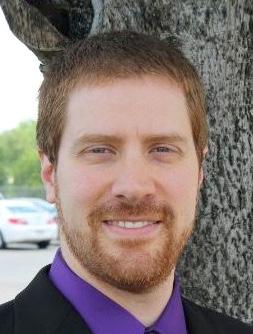
In his position as the CFO/Vice President of Administration, Joshua Audi leads the accounting, business operations, project management, social enterprise and Texas Office for Refugees divisions within the organization.
As a volunteer for TXCPA Fort Worth, he brings his critical thinking and problem-solving skills to the chapter’s Nonprofit Interest Group. He has also mentored many CPAs in the not-for-profit area.
His service in the community includes mentoring a refugee from Somalia who was searching for a safe place to call home. Audi tutored him for years in math and science and was amazed at his drive and hard work. Incredibly, despite being years behind in school, he graduated high school by 18, was the first member of his community to go to college and graduated with a business degree from the University of Texas at Arlington. He now has a family and is working in business to build a new life in America for the next generation.
Tara Blasor, CPA | Brazos Valley Chapter | Senior Lecturer & Assistant Department Head | Texas A&M University
Tara Blasor is a senior lecturer and assistant department head at Texas A&M University where she teaches juniorlevel accounting courses and coordinates their internal audit program.

She is passionate about the CPA profession and her students. In May 2020, when COVID-19 disrupted in-person events, she went above and beyond to send encouraging words to students whose CPA testing was disrupted and worked with colleagues to coordinate a virtual graduation ceremony.
She is actively involved in TXCPA Brazos Valley, having served as treasurer from 2016-2021. She currently serves as the TXCPA Brazos Valley Career Awareness chair and as a faculty ambassador for TXCPA. Throughout the year, she continues to coordinate and host chapter events on campus to increase students’ awareness of local accounting opportunities and provide a chance for employers to find local talent.
Today's CPA November / December 2022 17
Anat Borodyansky, CPA | Dallas Chapter | Shareholder | Huselton, Morgan & Maultsby (HM&M)

Anat Borodyansky is a tax shareholder at Huselton, Morgan & Maultsby PC. She has an extensive tax practice providing exceptional service to businesses and individuals in the construction, professional services and health care industries.
She is a strong advocate of the accounting profession, encouraging students to pursue their CPA license and work in public accounting. She is also a past president for the Dallas Chapter of the Accounting and Financial Women’s Alliance (AFWA) and has served as a director on the National Foundation Board of the AFWA.
She was born in the former Soviet Union, moved to Israel as a small child, but got to Texas as soon as she could when she moved to the U.S. in her teens. She understands the sacrifices and drive needed to pursue education and opportunities to make a better life.
Rebecca Buell, CPA | Dallas Chapter | Chief Financial Officer | National Breast Cancer Foundation Inc.
As the CFO, Rebecca Buell oversees multiple functions of the organization, including finance and accounting, human resources, risk management, business operations, information technology and the general administration of the office. She also has a heart for mentoring young people and started the first internship program for college students. The organization now has 10 full-time hires directly from the program.
In the community, she serves on the Board of Directors for JFS of Greater Dallas, a non-profit mental health and social services agency. She has also formed the NTX Nonprofit CFO Affinity Group that exists to provide peer support and share best practices among people in similar roles for the betterment of the industry.
Her colleagues have said that she exemplifies what it means to be a true servant leader, never too busy to mentor and pour into others to help them reach their full potential.
Sarah Burgess, CPA | Austin Chapter | International Tax Manager | Lumen Technologies
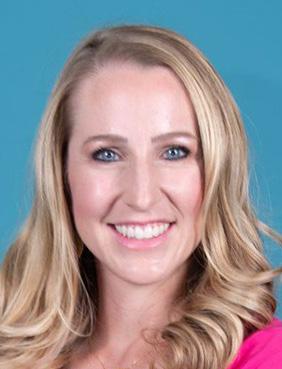
Sarah Burgess is an international tax manager at Epicor Software. In her position, she ensures compliance for Epicor’s footprint across 130 jurisdictions and manages all aspects of transfer pricing, including documentation requirements, policy changes, strategy and planning, and calculations.
She currently serves on the TXCPA Austin Executive Oversight Committee and is actively involved with TXCPA Austin’s Leaders Emerging in the Accounting Profession (LEAP) group.

Her greatest personal achievement was working to pay for her own education and graduating at age 29. She was the first in her immediate family to graduate from college in several generations. Adding to her success, she was also named TXCPA Austin’s Rookie of the Year in 2020 and TXCPA Young CPA of the Year in 2021.
Samuel Cooper, CPA, CFE | Houston Chapter | Forensic and Litigation Services Senior | Weaver
Samuel Cooper is a forensic and litigation services senior at Weaver in Houston. In his position, he analyzes company financial data to identify potential fraud, and assists with the preparation of testimony for losses and economic damages.
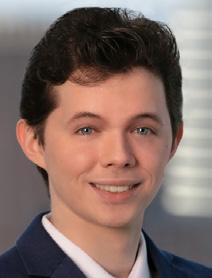
He is actively involved with TXCPA Houston and serves on the planning committees for their CFO/Controllers Conference, Spring Accounting Expo and CPE by the Sea Conference. He is also on TXCPA’s Young CPAs and Emerging Professionals Subcommittee of Membership Committee and Business Valuations, Forensic and Litigation Services Committee, and will be on the 2023-2024 Houston Association of Certified Fraud Examiners (Houston ACFE) Board of Directors, serving as the student relations director.
He is dedicated to helping students and mentoring those entering the accounting profession. He has participated in mentorship programs, attends career fairs and organizes events to encourage the next generation of CPAs.
Emily Do, CPA | San Antonio Chapter | Tax Manager | Haynie & Company

Emily Do is a tax manager at Haynie & Company, with experience in tax compliance, planning and consulting for high-net-worth individuals and businesses in various industries, including construction, real estate and manufacturing.
She is an active member of TXCPA San Antonio’s Member Involvement Committee, participating in community service projects and networking events. She was the 2020 winner of the chapter’s Fiesta Design Medal Contest, which raises funds for their largest community service project, Funlympics.
Her greatest personal achievement was moving from Vietnam to the U.S. to pursue a master’s degree in accounting. While attending Texas State University, she was active in their Beta Alpha Psi and Accounting Club activities and was selected as a McCoy College of Business Fellowship of Distinction recipient.
18 Texas Society of CPAs
AJ Evans, CPA | East Texas Chapter | Assurance Manager | Prothro Wilhelmi & Company, PLLC
In his position at Prothro, Wilhelmi & Company in his hometown of Tyler, Texas, areas of practice for AJ Evans include audits of financial statements for local governments, school districts, not-for-profit organizations, small businesses, and employee benefit plans.
He is currently serving as vice president on the Executive Committee of TXCPA East Texas, where he also chairs the CPE Committee. He has been involved as a board member for the chapter, as well as serving on the chapter’s Young CPAs Committee.

He is involved as a board member and Executive Committee member with Heart of Tyler, a non-profit organization that strives to partner with small businesses, local government and passionate members of the community to showcase and revitalize historic downtown Tyler for the people and places that make it incredible. He has assisted with planning showcase events that have raised tens of thousands of dollars for downtown causes.
Derby Gallo, CPA | Permian Basin Chapter | Tax Professional | Derby Gallo, CPA
Derby Gallo is an entrepreneur who has entered into a joint venture with David W. Baker, P.C. in Midland. As a tax professional, she prepares and reviews tax returns for individuals, companies and other organizations.
She is very active in TXCPA Permian Basin, currently serving as chapter president. Additionally, she has chaired both the Outreach and Pipeline Committees of her chapter. In these roles, she continually strives to advance new ideas and ways to engage current members, CPA candidates and students with TXCPA Permian Basin.
She also leads efforts for the chapter to volunteer with the West Texas Food Bank, Keep Midland Beautiful and Keep Odessa Beautiful. Her peers consider her to be a CPA who takes her contributions seriously and is an asset to both TXCPA and the accounting profession.
Sara Grenier, CPA | Fort Worth Chapter | Assurance Partner | FORVIS

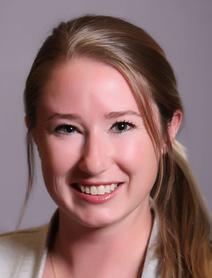
Sara Grenier is an assurance partner at FORVIS where she provides audit and consulting services for not-for-profit organizations and higher education institutions. She is also experienced with single audit requirements and has participated in peer reviews of other firms.
She has presented at several TXCPA events, including the TXCPA Fort Worth Member Appreciation Day, TXCPA Dallas Convergence 2021 and CPE Expo.
She is also involved with Child Care Associates, one of the largest child development programs in North Texas. She has served on the Board of Directors since 2018 and served as chairman in 2020. In 2020, she was recognized by the Fort Worth Business Press as a “40 Under 40” award recipient.
Benjamin Johns, CPA, CGMA | Fort Worth Chapter | Owner | BWJ CPA PC
Benjamin Johns is a CPA in Fort Worth. His firm services individuals, partnerships, corporations, subchapter S corporations, trusts and estates, and non-profits.
He has been involved in numerous charitable activities, including Habitat for Humanity, the Tarrant Area Food Bank and building a playground for the children at the RISE School.
He has served on TXCPA Fort Worth’s Accounting Career Education Committee (ACE) and participated in the CPA Career Forum the committee hosts at the University of Texas at Arlington. He considers it very important and rewarding to talk with college students about a career as a CPA, explaining what it’s like to work in both audit and tax and how the knowledge gained from working in one can be applied to a myriad of other opportunities available outside the traditional realm of accounting.
Jordan Johnston, CPA | San Antonio Chapter | Tax Senior | Lowrey Powell Stevens and Mangum PC

Jordan Johnston has been with the San Antonio CPA firm of Lowrey Powell Stevens and Mangum PC since 2017. He works primarily in the areas of tax, audit, consulting and accounting services. He approaches his work as a highly knowledgeable and adaptable professional who is ready to take on challenges of all sizes.
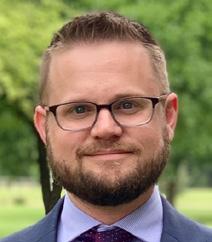
He has served as chair of TXCPA San Antonio’s Member Involvement Committee, which is one of the chapter’s most active volunteer-led groups. He led the development of the chapter’s New CPA Orientation program. The program integrates new professionals to the chapter and is offered in both in-person and virtual formats.
As a high-energy and ambitious CPA, he embraces professional involvement and community service activities with an attitude of diligence and the desire to share with new members the benefits of getting involved.
Today's CPA November / December 2022 19
Kristie Jumper, CPA | Permian Basin Chapter | Controller | Elevation Resources
Kristie Jumper is the controller at Elevation Resources, an independent energy company based in Midland. In this position, she oversees the organization’s accounting processes, compiles and prepares financial reports and statements, and manages employees in the accounting department.
As a highly involved volunteer, she serves on the Board of Directors for both TXCPA Permian Basin and the Petroleum Accountants Society of the Permian Basin (PASPB). She has volunteered with TXCPA Permian Basin’s Meet the CPAs event at the University of Texas of the Permian Basin campus where UTPB students had the opportunity to ask professionals in the area about the process and advantages of becoming a CPA.
She has also organized events for PASPB members, including ones to benefit other colleagues and non-profit organizations. Her peers consider her to be a bright and rising star in the Permian Basin.
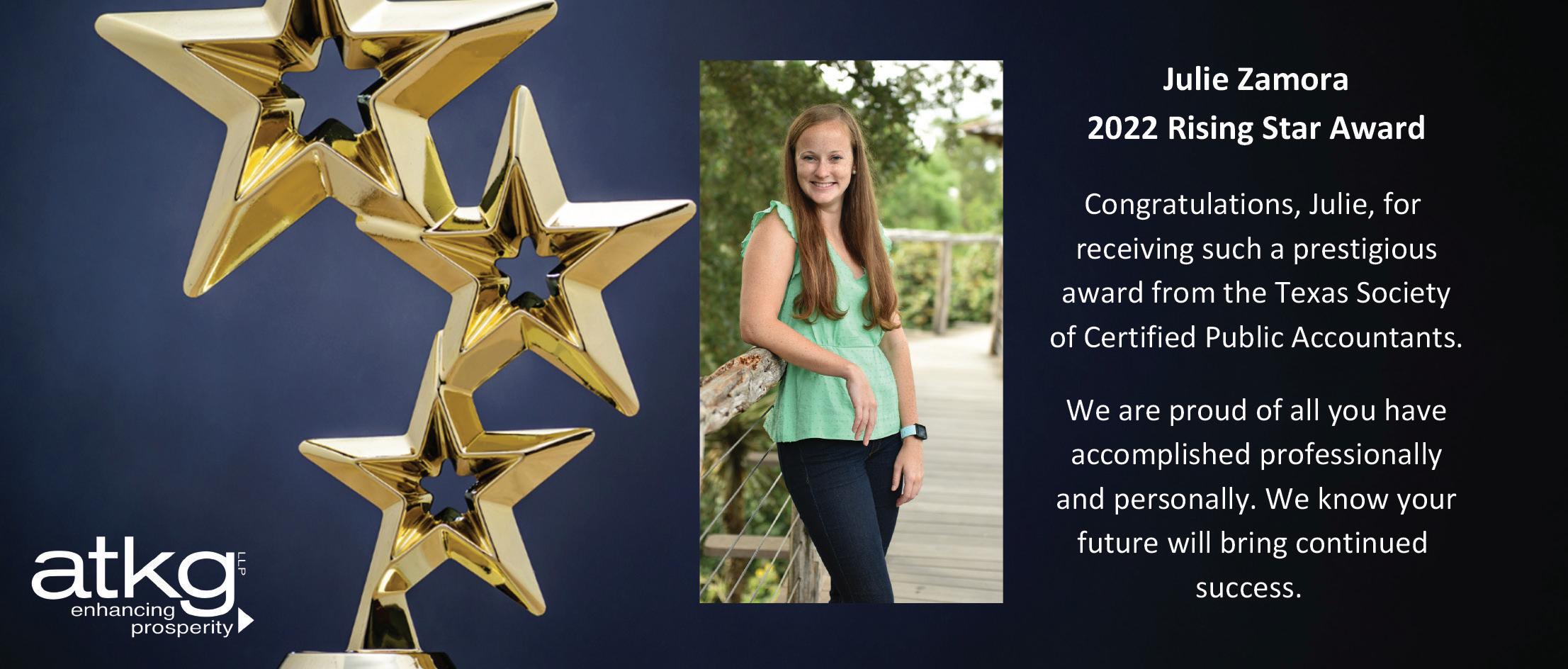
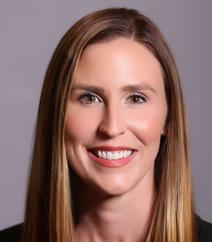
Rebecca Manrriquez, CPA | Dallas Chapter | Senior Tax Analyst | Thomson Reuters

In her position as a senior tax analyst at Thomson Reuters, Rebecca Manrriquez develops tax software for their GoSystem and OneSource products. This involves implementing tax law by coding the tax calculations with logic in the software, designing the visual representation used by clients, and coordinating the forms and e-file approval for product release.
She is a graduate of the TXCPA Dallas Leadership Development Academy and has been a valued member of the chapter’s CPA Involvement, Scholarship, and Membership Committees, as well as the CPE Council and Young Professionals Group. She has also represented the chapter on the TXCPA Board of Directors and is involved with the Latino Employee Network at Thomson Reuters. She is regarded as a dedicated, enthusiastic contributor who is always ready to make a positive impact on her profession and community.
Andrew Merryman, CPA, RIA| Victoria Chapter | Partner | Bumgardner Morrison & Company LLP

Andrew Merryman is a partner and licensed financial advisor at Bumgardner, Morrison and Company. In his position, he performs peer reviews, oversees technical reviews for all accounting and auditing engagements, is the primary reviewer of approximately 250 tax clients, and assigns and facilitates firm-sponsored CPE.
He has served on the TXCPA Peer Review Committee (and several others) and five years on the TXCPA Victoria board, donated time on the board of Habitat for Humanity, and has shown great leadership skills both within his firm and the community. He also plays guitar in his church worship band.
His colleagues consider him to be a wonderful example of a CPA who shows enthusiasm for the profession and is always eager to lend his expertise to those in need, whether it be in the area of wealth management, tax, audit or general accounting.
20 Texas Society of CPAs
Alba Priest, CPA | Permian Basin Chapter | Audit Manager | Whitley Penn LLP
Alba Priest is an audit manager at Whitley Penn, where she works as the engagement lead on multiple audits and facilitates contact between clients, the staff and the partner.

She is actively involved in TXCPA Permian Basin, having served on the Young and Emerging Professionals Committee. She is also the treasurer for the Petroleum Accountants Society of the Permian Basin (PASPB).


She moved to the U.S. from Mexico at a very young age and was the first person in her family to go to college. In her accounting career, she has worked her way up to management. She is regarded as a volunteer who strives to recruit young people into the accounting profession and enjoys seeing them get excited about their potential to make a difference.
Renee Prince, CPA, CGMA | Fort Worth Chapter | Founder and President | Renee Prince CPA PC
Renee Prince is a sole practitioner in Granbury. Her firm has helped lead the way for virtual firms/services since 2012. She provides clients with tax preparation, consulting and accounting services.
She has led the Tax Group for TXCPA Fort Worth and serves on the AICPA Council. She works to make an impact by being involved in her small-town community in a variety of different ways, from helping small business owners get on their feet to helping individuals feel more comfortable about their tax returns.
She understands that her work as a trusted advisor is very important to clients and has a huge effect not only on their businesses, but also their lives.
Andrea Rosillo, CPA | Dallas Chapter | Tax Senior | EY

As a Tax Senior, Andrea Rosillo provides tax planning consulting services to her corporate clients in the Technology, Media and Entertainment, and Pharmaceutical industries. Currently, her focus area is on calculating and substantiating the Research and Development tax credits that are claimed by her clients.
She is a member of the Association of Latino Professionals For America (ALPFA) DFW Professional Board and was recognized as one of 50 successful women across the nation in ALPFA’s 2021 Latinas to Watch list. She is also part of the Co-Lead for EY’s Dallas-Fort Worth LatinX Professional Network.
Her parents moved their family from Mexico to Texas when she was 10 years of age to pursue a better future. In her career, she has learned that networking is not enough - you have to create and invest time in relationships where you can share lessons learned, opportunities and knowledge.

Julie Sigety, CPA | Austin Chapter | Auditor | Atchley & Associates LLP
As a Senior Audit Associate, Julie Sigety reviews financial statements, reports and other documents to ensure they are accurate and complete and coordinates the different steps of audit engagements with her clients and staff. She helped to improve audit documentation related to internal controls and audit programs. She also researched the AICPA audit standards and her firm’s RSM Alliance audit guides to propose necessary audit documentation improvements that were accepted across areas of the audit.
She serves on TXCPA Austin’s Oversight Council, is very involved in the chapter’s Leaders Emerging in the Accounting Profession (LEAP) group, and is the chair of the TXCPA Austin Mentor Program.
She has an educational background as a teacher prior to becoming a CPA and greatly enjoys mentoring and helping others reach their educational and career goals. She looks to continue mentorship throughout her career to assist the next generation of CPAs.
Julia (Julie) Zamora, CPA | San Antonio Chapter | Tax Senior | ATKG LLP
Julie Zamora prepares and reviews federal and state tax returns, consolidated federal income tax returns, and federal and quarterly estimated tax estimates. She also supervises and coaches staff personnel and is on the onboarding committee for new employees.
She has been an enthusiastic leader of TXCPA San Antonio’s Young Accounting Professionals group, offering innovative and safety-conscious ways for the chapter’s under-40 members to connect during the pandemic. In addition, she has greeted new CPAs at the Texas State Board of Public Accountancy Swearing-in Ceremony.
Her service in the community has included running the community involvement committee at her firm. She and the committee organized a food bank monetary donation drive, blood drives, multiple food drives, a Habitat for Humanity house build, and a fundraiser for the Capernaum Art and Talent Show. She is considered by her peers to be a volunteer who is quick to jump in and help in any way possible.
Today's CPA November / December 2022 21
BLOCKCHAIN: The Architecture Underlying Crypto Assets
By Josef Rashty, CPA
CURRICULUM: Accounting and auditing; management
LEVEL: Basic
DESIGNED FOR: CPAs in industry and public practice
OBJECTIVES: To provide a brief explicative summary of the underlying technology of crypto assets and discuss the related technical architecture
KEY TOPICS: Blockchain technology, traditional network and distributed ledger technologies, types of blockchain, security and accounting systems, and crypto assets
PREREQUISITES: None
ADVANCED PREPARATION: None
The use of cryptocurrencies has been expanding rapidly and many more companies accept them in their ordinary course of business. The underlying technology
of cryptocurrencies and digital assets is “blockchain” or distributed ledger.
The distributed ledger based on blockchain is unlike a traditional network since it does not have a common central authority. Blockchain consists of a network of interlinked computers that no single person can control or manipulate.

Bitcoin was the first and is probably the most popularly used cryptocurrency. An anonymous software developer known by the pseudonym Satoshi Nakamoto introduced it during the 2008 global financial crisis for companies and individuals to buy goods, services and currencies online.
Blockchain is a shared, immutable ledger that facilitates the process of recording transactions and tracking assets in a business network. (An
immutable ledger means that participants cannot change or tamper with recorded transactions in a shared ledger.) If a recorded transaction has an error, a new transaction should reverse the error, with both transactions being visible.
An asset can be tangible (e.g., a house, car, cash, land) or intangible (e.g., intellectual property, patents, copyrights, branding). If all participants on the database do not validate a particular transaction, that transaction will not get accepted. This feature of blockchain reduces the risk and cuts the costs for all involved.
This article is a brief explicative summary of the underlying technology of crypto assets. It is not a technical reference and aims at an audience with a business background. Today’s CPA in its May/ June 2022 issue published an article by Josef Rashty, “Accounting and Tax Implications of Crypto Assets.”
The following article discusses the underlying technical architecture of the crypto assets and is the continuation of the earlier publication.
CPE ARTICLE
22 Texas Society of CPAs
Blockchain technology is complicated and overwhelming even for technology savvy individuals; thus, for the reasons of brevity, this article has focused on expounding on only a few important and relevant concepts.

Blockchain Technology
A blockchain is a distributed, peer-topeer database that hosts a continuously growing number of transactions.
Each transaction is a “block” and is secured through cryptography, time-stamped, and validated by all authorized members of the database using consensus algorithms.
Each block connects to the ones before and after it. These blocks form a data chain as an asset moves from place to place or ownership changes hands (see Figure 1). The blocks confirm the exact time and sequence of transactions, and the blocks link securely together to prevent any block from being altered or a new block inserted between two existing blocks.
does not make this type of network necessarily ineffective or outdated.
Certain business functions work well in such environments, but they have challenges. The challenges include:
• It takes significant time and costs to process transactions and manage the network.
• It cannot validate the participating transactions.
• It is subject to error and vulnerable to hacking.
Figure 2 depicts the participating transactions and the central power and authority of the traditional network.
In a decentralized database, no one person or company controls the database. Instead, the database is spread across multiple sources to create a shared database.
Distributed Ledger Technologies
Rules, rather than a central authority, control the distributed ledger technologies. All members can access the network and have a consensus to add transactions to the database. Each transaction is encrypted using an algorithm and a “key” to convert an unencrypted input into an encrypted output.
There is a misconception that only one universal blockchain exists, but each cryptocurrency has its blockchain – for example, bitcoin and ethereum use different blockchains. There are other public blockchains, in addition to bitcoin and ethereum, and private blockchains that provide access to a limited group of parties.
Traditional Network Technologies
The traditional network structure requires a central authority with decision-making power and this central authority manages all aspects of the environment. This feature
The distributed ledger technology underlying private blockchains (discussed later in this article) appeals to large corporations. These private chains allow for a more traditional frame of control since they can grant rights and restrictions to participants in a closed and controlled network.
Thus, transactions in a distributed ledger have the following characteristics:
• Transactions are processed quickly and at a lower cost since distributed ledgers have a set of rules on the blockchain to speed up the processing of transactions (smart contracts, which is a set of
1 2 3 4 Centralized Databases BLOCKCHAIN Figure 1 Figure 2 Today's CPA November / December 2022 23

rules stored on a blockchain to speed up the execution of transactions automatically).
• Since all participants validate the transactions, they are less prone to error and more secure.
• Participants cannot change or tamper with transactions when they record them in the shared ledger.
3. Consortium blockchains require permission to access and a group of organizations, rather than one entity, governs them, as in the case of the private blockchain. It has private and public features. A consortium blockchain is private, with limited access to a particular group and eliminates the risks that just one entity can control the network in a private blockchain.
transaction or bundle of transactions. Each new block connects to the blocks before it in the cryptographic chain and architecture makes it nearly impossible to tamper with the transaction. An agreed-upon consensus mechanism, which secures the correctness and validity of the database, controls the integrity and security of transactions.
This architecture ensures that once a transaction is validated and input into the system, it can never be deleted, edited or changed. Although they have shown relative resiliency to outside attacks, there is no total immutability – blockchain technology produces a tamperproof ledger of transactions, but this is not to say that it is immune to cyberattacks and fraud.
Figure 3 depicts the participating transactions in a distributed ledger network.
Types of Blockchain
There are four main types of blockchain networks.
1. Decentralized public blockchains allow anyone to join them. They give equal rights of access to participants to all the nodes. The participants have equal rights, create new blocks of data and validate blocks of data.
2. A centralized power permits participants to join a private network and determines who can be a node. The central authority also does not necessarily grant each node equal rights to perform its functions. Thus, private blockchains are only partially decentralized because access to them is restricted.
4. A single organization controls a hybrid blockchain, but a level of oversight exists for some transaction validations. A hybrid is a mix of private and public. It gives organizations better control over what they want to achieve rather than change their plans on the limitation of the private and public technology. An example of a hybrid blockchain is IBM Food Trust, which improves efficiency throughout the whole food supply chain.
Security
Blockchain technology has a data structure with inherent security qualities. The principles of cryptography, decentralization and consensus ensure trust in transactions. This architecture makes blockchain immutable and provides for a self-validating audit trail.
In most blockchains or distributed ledger technologies, the data consists of blocks, and each block contains a
Blockchains are not fully resilient to cyber-attacks and do not have total immutability. Thus, it is feasible to manipulate the known vulnerabilities in the infrastructure. For example, fraudsters may steal the access keys and conduct fraudulent activities on behalf of the rightful owners – a private key is analogous to a password associated with cryptocurrency. Computer hackers may also compromise the system and conduct fraudulent transactions.
A problem that blockchain cannot resolve is collusion – a traditional fraud scheme by two employees colluding to reverse or manipulate blocks of transactions. Reports of fraudulent activities and hacking of blockchains have become sensual events, and media report them with commotion and fanfare almost daily.
Ransomware, with unknown origins, has often attacked and hacked blockchains. Ransomware attacks could involve both state and nonstate players. The U.S. government has expressed concerns about the illegal use of cryptocurrencies in perpetuating these attacks and is taking steps to counter them.
CPE ARTICLE
1 2 3 4 5 6 Figure 3 Today's CPA November / December 2022 25
Blockchain and Accounting Systems
Blockchains can support accounting systems that require transaction verification from a neutral third party. A “triple party” accounting information system is created, consisting of two parties involved in the transaction and the intermediary. In a distributed shared ledger, participants record transactions only once by eliminating the duplication of effort typical of traditional business networks.
For example, each account in the double-entry system will have a corresponding blockchain account. When a company makes a payment to one of its accounts payable vendors, the system creates a journal entry debiting accounts payable and crediting cash in the Enterprise
Resource Planning (ERP) system. Then, it makes a corresponding entry simultaneously to the blockchain account and ledger using a token. The token executes a payment upon certain conditions (e.g., due date).
Businesses rely on accurate and timely information. The faster they receive more precise information, the better. Blockchain is ideal for delivering that information because it provides immediate and transparent information stored on an immutable ledger that only members who have permission can access. The network can track orders, payments, accounts, production and more. Since all members share a single view of data, they can see all details of a transaction end to end.
While the technology may appear to have promising implications in
accounting, it is at an infancy stage and there are challenges to fully adopting it. These challenges are:
• Technological requirements,
• Training of employees, and
• Privacy concerns.
Crypto Assets
Companies are increasingly using crypto assets for their payments, receipts or investments, and they rely on the capabilities of blockchains to execute these processes. We have had scant guidance from accounting literature dealing with digital assets and their operating technological environment.
The Financial Accounting Standards Board (FASB) and the U.S. Securities and Exchange Commission (SEC) plan to address cryptocurrencies more comprehensively. They plan
To view the complete schedule and register for upcoming CPE programs, go to the Education area of our website at tx.cpa/ education/cpe or call the TXCPA staff at 800-428-0272 (972-687-8500 in Dallas) for assistance.

TXCPA’s Upcoming CPE Programs
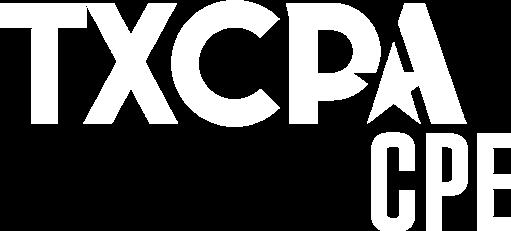
Mark your calendar and plan to attend TXCPA’s upcoming CPE programs. We have a full schedule of live and online options to meet your education needs. Our popular live CPE Expo is coming in December to the following cities and several tracks will also be available via webcast.
CPE Expo | December 5-6 | Houston
CPE Expo - Accounting and Auditing Track | December 5-6 | Webcast
CPE Expo | December 12-13 | San Antonio
CPE Expo - Tax Track | December 12-13 | Webcast
CPE Expo | December 15-16 | Dallas
CPE Expo - Professional Development Track | December 15-16 | Webcast
TXCPA Passport: On-demand Webcast Subscription
The TXCPA Passport is an easy, affordable and convenient way to get your CPE. For only $199, the one-year subscription gives you unlimited access to more than 100 total CPE hours with programs of varying length. To purchase your Passport, go to the TXCPA website at tx.cpa/education/passport
CPE ARTICLE
26 Texas Society of CPAs
to issue more specific guidance to provide a substratum to deal with the particular and emerging accounting issues of digital assets.
The recent volatility of crypto assets has made the need for new guidance even more pressing. For example, bitcoin fell below $17,700 in mid-June. Tesla announced that it recorded a $170 million impairment charge against the $1.5 billion worth of its bitcoin holdings for the first six months of 2022 (The WSJ, July 26, 2022). MicroStrategy, which currently owns roughly $3.1 billion bitcoins, announced a loss of $1 billion, much of that from devaluation of its bitcoin holdings (The WSJ, August 4, 2022).
Following is a summary of recent accounting guidance on digital assets.
In December 2019, the American Institute of CPAs (AICPA) issued its nonauthoritative practice aid, Accounting for and Auditing of Digital Assets. The consensus from the AICPA practice aid is that companies should classify crypto assets, based on Topic 350, on their balance sheets as indefinite-lived intangible assets. (Generally, intangible assets lack physical substance.)
In March 2022, the SEC staff issued Staff Accounting Bulletin (SAB) 121, which outlines the staff’s views on how public entities should account for obligations to safeguard the cryptocurrencies of third parties. This SAB does not apply to entities that own and maintain their control over those digital assets themselves.
In May 2022, FASB added a project to its technical agenda to improve the accounting for, and disclosure of, certain digital assets.
In September 2022, FASB discussed the scope criteria for the project. FASB decided that crypto assets that are held by an entity must meet the
following criteria to be within the project’s scope:
• Meet the definition of intangible asset as defined in the Codification Master Glossary;
• Do not provide the asset holder with enforceable rights to, or claims on, underlying goods, services or other assets;
• Are created or reside on a distributed ledger or “blockchain;”
• Are secured through cryptography; and
• Are fungible.
FASB also discussed the different entity types that would be within the scope of the guidance. It decided that all entities would be within the scope of the project and that throughout the remaining deliberations, FASB will consider the applicability of its decisions to those entities.
only to certain parties to read and write transactions.
In distributed ledger technology, all parties on the blockchain control and maintain information. This mechanism provides an additional layer of system control. However, this does not imply that the technology is immutable – it has been subject to hacking and cyberattacks almost daily.
After being hands-off toward cryptocurrencies, it appears that finally, regulators in Washington, D.C. plan to build a regulatory framework governing the industry and its use. FASB and the SEC have focused on cryptocurrencies recently and have initiated several projects to address the related accounting and reporting issues.
SEC Chairman, Gary Gensler, has likened cryptocurrency markets to the Wild West and wants to maintain tight controls over their use and operations. The SEC monitors bitcoins and other cryptocurrency developments and transactions regularly.
Summary
Blockchain technology is a database that allows data to be stored and exchanged on a peer-to-peer basis. The adoption and acceptance of blockchain technology have grown steadily since its introduction as a platform for cryptocurrency transactions.
Businesses now use this technology to manage their supply chains, verify payments, create algorithm-based contracts and many other functions.
The blockchains in business enterprises are usually private or permission based that grant rights
For example, asset managers for years have been trying to sell bitcoin Electronic Exchange Funds (ETFs) –existing ETFs only deal with futures.
In a dramatic move, in July 2022, an investment firm made a bid to change its large bitcoin fund into an ETF. The SEC rejected this bid, which reflects that the SEC is tightening its grip both on cryptocurrency transactions and operations (The WSJ, July 1, 2022).
About the Author: Josef Rashty, CPA, Ph.D. (Candidate), is a member of the Texas Society of CPAs and provides consulting services in Silicon Valley, Calif. He can be reached for comments and suggestions at j_rashty@yahoo.com
TXCPA offers a number of CPE programs covering the topic of cryptocurrency. Go to the Education area of the website and search on cryptocurrency.
Today's CPA November / December 2022 27
TXCPA Thanks Our Strategic Partners
Goodman Financial and CPACharge
TXCPA would like to thank Goodman Financial and CPACharge, our 2022-23 Strategic Partners! We are pleased to have them as strategic partners and appreciate their generous investment in our organization.

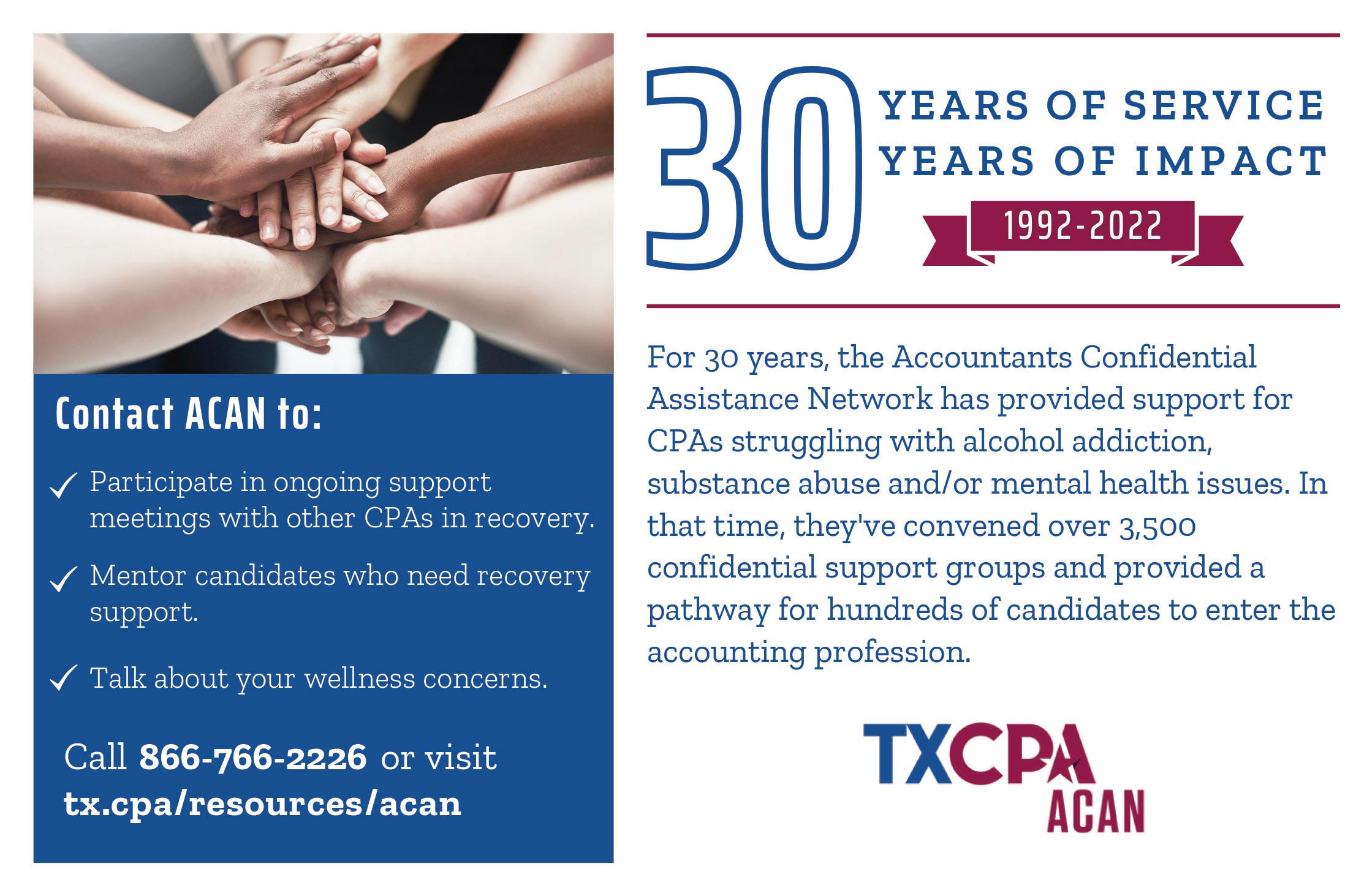
Goodman Financial is a Texas-owned, fee-only investment management and financial advisory firm that has no affiliation with any insurance company, bank, mutual fund or brokerage firm. Their independent model and high ethical standards focus on keeping their clients’ goals as their top priority in all of the investment decisions they make.
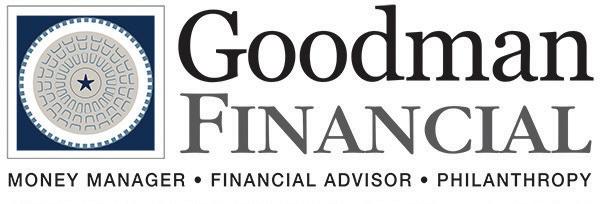
TXCPA’s Annual Partners Program
CPACharge is a Texas-based financial technology company that provides payment solutions to the accounting and professional service markets. They deliver a proven technology to help CPAs manage online payments in their firms, with the reporting and reconciliation functionality that matters most to accounting and finance professionals.
TXCPA’s Annual Partners benefit from extended marketing reach and elevated positioning through a curated sponsorship package. TXCPA is an ideal partner to help you increase and enhance your visibility in the CPA market in Texas. Learn more about the packages and options available through our Annual Partners Program on our website. Go to www.tx.cpa and click on Advertise at the top of the page or contact Lisa Turner at sales.mediabydesign@gmail.com

Take this CPE quiz online! Go to TXCPA's website at https://www.tx.cpa/resources/today's-cpa
Please note that when registration is complete, a confirmation email will be sent and provide a hyperlink to access the quiz.
CPE ARTICLE: BLOCKCHAIN - THE ARCHITECTURE UNDERLYING CRYPTO ASSETS
By Josef Rashty, CPA
Today’s CPA offers the self-study exam for readers to earn one hour of continuing professional education credit. The questions are based on technical information from the preceding article. If you score 70 or better, you will receive a certificate verifying you have earned one hour of CPE credit – granted as of the date the test arrived in the TXCPA office – in accordance with the rules of the Texas State Board of Public Accountancy (TSBPA). If you score below 70, you will receive a letter with your grade.
1. Blockchain consists of a network of interlinked computers that ________________ can control or manipulate. a. A single person b. No single person c. Only selected people d. Nobody
2. Identify the correct statement. a. Blockchain is not a shared but immutable ledger b. Blockchain is a shared but not immutable ledger c. Blockchain is not a shared and a not immutable ledger d. Blockchain is a shared, immutable ledger
3. Each transaction is a “block” and: a. Each block connects only to the ones before it b. Each block connects only to the ones after it c. Each block connects to the ones before and after it d. Each block is on its own and does not connect to any other blocks
4. Identify the correct statement. a. Each cryptocurrency has its blockchain b. Only bitcoin has a blockchain c. A group of cryptocurrencies form a blockchain d. All of the above
5. What does control the distributed ledger technologies? a. Central authority b. Rules c. Both a and b d. Neither a nor b
6. There are __________ main types of blockchain networks. a. Three b. Five c. Six d. Four
7. The blockchain architecture ensures that once a transaction is validated and input into the system, it can never be: a. Deleted b. Edited c. Changed d. All of the above
8. Blockchains are ____________ resilient to cyber-attacks and do not have total immutability. a. Not fully b. Fully c. Always d. None of the above
9. In a distributed shared ledger, participants record transactions _________________. a. Multiple times b. Only once c. At least two times d. None of the above
10. When did FASB add a project to its technical agenda to improve the accounting for, and disclosure of, certain digital assets?
a. In May 2021 b. In March 2022 c. In May 2022 d. In December 2019
ToreceiveyourCPEcertificatebyemail,pleaseprovideavalid emailaddress.
Please mail the test (photocopies accepted) along with your check to: Today’s CPA; Self-Study Exam: TXCPA CPE Foundation Inc.; 14651 Dallas Parkway, Suite 700; Dallas, Texas 75254-7408. TSBPA Registered Sponsor #260
Company/Firm:
(Where certificate should be mailed):
Address:
checks payable to The Texas Society of CPAs
CPE QUIZ |
Name: _________________________________________________________
________________________________________________ Address
City/State/ZIP: _________________________________________________ Email
_________________________________________________ Make
$15 (TXCPA Member) $20 (Non-Member) Signature: _____________________________________________________ TXCPA Membership No: _______________________________________ Today's CPA November / December 2022 29
CLASSIFIED | To place a classified ad, email ddeakins@tx.cpa
PRACTICES FOR SALE
North Dallas firm for sale. 95% tax, 110k. Discounted office space available. Contact ddeakins@tx.cpa.
Turn-key opportunity perfect for individual CPA in south-central Texas. Retirement minded CPA in business for 45 years looking for the right person to step in and take over business of 1200 tax returns. Loyal, long-term clients. Owner would like to continue working, but fewer hours. Contact lindam9631@gmail.com
BUYING-SELLING PRACTICES throughout Texas for over 39 years … Offering 90% financing to buyers, so our sellers can cash out at closing! We only get paid for producing results! Confidential, prompt, professional. New practice located in Houston-Beaumont area with above average net and grossing $500,000+. Great staff and location!! Many others. Contact Leon Faris, CPA ... PROFESSIONAL ACCOUNTING SALES ... 972-292-7172 … Visit our website: www.cpasales.com for the latest listings and information.
ACCOUNTING BIZ BROKERS offers the following listings for sale:
NE Dallas suburb gross $775k (New)
N Houston/The Woodlands gross $930k (New)
Eastern Brazos Valley area gross $720k
Uvalde County gross $729k (Sale Pending)
Texas County, OK gross $400k
Contact Kathy Brents, CPA, CBI Office 866-260-2793 - Cell 501-514-4928
Kathy@AccountingBizBrokers.com
Visit us at www.AccountingBizBrokers.com
Member of the Texas Society of CPAs Member of the Texas Association of Business Brokers
Texas Practices Currently Available Through Accounting Practice Sales: North America’s Leader in Practice Sales Toll Free 1-800-397-0249 See full listing details and inquire/register for free at www.APS.net.
$585,000 gross. Dallas CPA practice. Sophisticated client base grown from primarily referrals and is primarily made up of tax work (95%). Clients are high net worth individuals and businesses. Perfect size for an experienced CPA. TXN1603
$135,000 gross. Greater Killeen area CPA practice. Loyal client base made up of 82% tax preparation and 18% bookkeeping for year-round income. Over 67% cash flow. Owner assist transition available. TXC1083
$109,400 gross. Addison CPA practice. Desirably located with a nice mix of quality clients. Solid fee structure and strong fee structure yields 60% cash flow. TXN1604
$68,000 gross. North Texas (near Wichita Falls). Strong fee structure and high realization rate. Over 50% revenues are from audits and 45% from tax work. TXN1609
$506,000 gross. Northern San Antonio metro CPA. 59% tax preparation (30% individual, 59% business, 11% other), 29% bookkeeping, 8% consulting, 4% Texas franchise returns. TXC1083
$190,000 gross. Virtual NE Houston CPA firm. Year-round revenue and excellent cash flow. Services composed of tax (57%), accounting (12%), and other (31%). TXS1304
$292,000 gross. Brazoria County CPA firm. Reputable practice with growth opportunities due to referrals from loyal clients. Owner transition available. Service mix 62% tax, 29% accounting and 9% other. TXS1293
$323,000 gross. Virtually based DFW medical practice. Strong fee structure and low overhead that yields cash flow of over 80%. Ample growth opportunity for this niche firm. TXN1613
$1,285,000 gross. Allen, Texas CPA practice. Rapidly growing revenues and loyal client base. Services composed of tax (75%), accounting (17%) and tax planning services (8%). Strong staff in place ready for a smooth transition. TXN1614
$1,076,000 gross. Northeast Dallas CPA. Respected, established practice for over 40 years. Over 65% is business clients. Revenues nice mix of tax (65%) and accounting (35%). Long-term staff, excellent fee structure. TXN1615
$140,000 gross. Addison CPA. High quality, loyal clients. Centrally based location in DFW. Revenues tax (76%) and accounting (24%) for year-round income. Cash flow near 60%. TXN1616
$620,000 gross. Brownwood area CPA. Nicely balanced revenues between 75% tax work, 15% accounting services, 10% payroll/compliance. Great cash flow to owner. TXN1534
$1,119,000 gross. Heart of Texas CPA practice. Tax prep is 85-90% of revenue yearly, 2/3 individuals, business and trust make up remainder. Bookkeeping 10-15%. Tenured staff. TXC1077
$447,000 gross. Heart of Texas CPA firm. 80% tax, (78% inv., 13% bus., 9% other), 11% bkkpng, 9% audits/reviews, cash flow around 43%, staff in place, owner available to stay on as employee after sale if needed. TXC1078
$510,000 gross. NW of Dallas CPA firm. Tax 72%, accounting 28%, strong fees, solid cash flow, experienced staff in place, turn-key location in desirable DFW community. TXN1526
$307,000 gross. North Texas CPA practice. Tax 65%, accounting 35%, solid fee structure, experienced staff, and the perfect size starter or add-on practice. TXN1558
$730,000 gross. Northeast Texas CPA firm. Tax 55% and accounting 45%, solid fee structure, experienced staff, and exceptional client base. Lots of room for growth, 80% total revenues from businesses. TXN1587
$480,000 gross. Fort Worth CPA tax practice. Strong cash flow to owner 55%, quality clientele, year-round income, and amazing expansion ability with individual and business referrals. TXN1588
$1,125,000 gross. W. Houston CPA firm. 66% tax, 22% audit/review, 12% bookkeeping. Excellent cash flow to owner, premium clientele, and experienced staff in place. TXN1246
$283,000 gross. Southeast Texas CPA firm. 60% tax and 40% bookkeeping. Building available for lease or purchase. Friendly and loyal clients, growth opportunities, and owner assisted transition available. TXS1232.
$1,700,000 gross. N. Houston CPA practice. Great service mix to provide year-round revenue with heavier workload during Sep/Oct deadlines. Strong, experienced staff in place. TXS1264
$116,000 gross. The Woodlands area CPA firm. Operates remotely from anywhere in Houston. Excellent cash flow, high-income clients. TXS1291
$567,000 gross. NE of Houston CPA firm. Owner looking to semi-retire and will assist buyer as agreed. Great service mix of tax, bookkeeping, and payroll/consulting. Turn-key opportunity with experienced staff in place and office available for lease. TXS1283
$905,000 gross. Semi-virtual Texas based CPA firm. Multiple-location firm with possibility to be completely virtual over time. 66% tax work, 27% accounting and 7% payroll. Year-round income with about 55% income derived from businesses. TXN1606
$255,000 gross. North Dallas CPA tax clients. Loyal clients from a variety of businesses and industries. About 80% of business done by portal, making it an easy acquisition for an existing firm. Option to maintain space for seamless transition. TXN1605
30 Texas Society of CPAs
$533,000 gross. East Texas CPA firm. Highly regarded firm offers bilingual services to businesses and business owners. Revenues 50/50 tax work and accounting services. Strong cash flow over 50% gross income. TXN1601
$154,000 gross. Northeast Dallas CPA practice. Unique, niche tax preparation. Revenues from tax preparation for individuals and small businesses make up 70% of revenues. Excellent fee structure yields cash flow that is 80% gross income. TXN1593
$375,000 gross. Carrollton CPA practice. 81% tax work, 10% accounting services, 8% payroll. Outstanding cash flow to owner with over 95% gross revenues. Operated out of home office and seller will assist for smooth transition through first tax season. TXN1600
$3,560,000 gross. North Texas CPA practice. Well established and growing firm that is exceptionally profitable for a firm its size due to fee structure and high realization rate. 50% auditing services and 45% tax work. Complete with long-term staff and partners to aid in transition. TXN1597
$424,000 gross. Garland CPA practice. Long standing practice with quality client base. Desirable mix of revenues for year-round income. 68% tax work, 22% accounting and bookkeeping, and 8% payroll services. TXN1596
$439,000 gross. Flower Mound CPA practice. Reputable practice has grown through word of mouth. Strong fee structure. 59% tax and 39% accounting with other services to provide year-round income. Owner willing to assist in transition. TXN1598
$191,000 gross. East Texas (Cedar Lake area) CPA practice. Well established and rapidly growing practice. 80% tax preparation and 20% bookkeeping and payroll services. Excellent cash flow of 64% gross revenues and experienced staff to aid in transition. TXN1590
$477,000 gross. NW Houston CPA firm. Revenues made up of accounting 74%, tax 24%, and other 2%. Year-round cash flow and knowledgeable staff. Owner willing to assist smooth transition. TXS1300
$1,040,000 gross. South Texas CPA firm. Nicely mixed revenues 43% accounting, 38% tax and 19% other services. Year-round cash flow and knowledgeable staff. TXS1298
$650,000 gross. West Houston accounting firm. Service mix 93% accounting and bookkeeping and 7% tax. Nice location for buyer with extra room to bring in additional staff. TXS1297
$1,013,900 gross. SW Houston CPA firm. Desirable location and cash flow. Well trained support staff already in place. Services desirably mixed 67% tax, 12% accounting, 15% reviews, and 5% audits. Seller assisted transition. TXN1295
$354,000 gross. NW Houston CPA firm. Predominately made up of complex tax returns. Nice cash flow and high-income quality clients. Excellent staff ready and able to assist. TXS1296
$316,000 gross. Galveston County CPA. Service mix includes 67% tax, 14% audit/review and 6% other. Year-round work provides excellent cash flow. Prime location with loyal clients. TXS1287
$2,201,000 gross. West Texas firm. Highly motivated multi-owner CPA firm. Revenue mix is 14% accounting services, 29% tax preparation (49% individual, 41% business, 10% other) and 57% attest services. Large tenured staff and long assisted transition by owner. TXW1030
$150,000 gross. Katy CPA firm. Service mix tax (96%) and other (4%). Loyal, long-term clients with many referrals for growth. Owner transition available. TXS1305
ACCOUNTING PRACTICE SALES
For more information, call toll free 1-800-397-0249
See full listing details and inquire/register for free at www.APS.net.
PRACTICES SOUGHT
SEEKING CPA FIRM SELLERS
Selling your firm? Accounting Biz Brokers has GREAT NEWS for you!
We are experiencing a high volume of buyer activity and lenders are eager to assist with financing deals! Accounting Biz Brokers has been selling CPA firms for over 18 years and we know your market. Selling your firm is complex. We can simplify the process and help you receive your best results! Our “Six Steps to Success” process for selling your firm includes a personalized, confidential approach to bringing you the “win-win” deal you are looking for.
Our brokers are the only Certified Business Intermediaries (CBI) specializing in the sale of CPA firms in the nation! When you are ready to sell, we have the buyers, financing contacts and the experience to assist you with the successful sale of your firm! Contact us TODAY to take the first step!
Kathy Brents, CPA, CBI
Office 866-260-2793 Cell 501-514-4928
Kathy@AccountingBizBrokers.com
Visit us at www.AccountingBizBrokers.com
Member of the Texas Society of CPAs
BUYING OR SELLING?
First talk with Texas CPAs who have the experience and knowledge to help with this big step. We know your concerns and what you are looking for. We can help with negotiations, details, financing, etc. Know your options. Visit www.APS.net for more information and current listings. Or call toll-free 800-397-0249. Confidential, no-obligation. We aren’t just a listing service. We work hard for you to obtain a professional and fair deal.
ACCOUNTING PRACTICE SALES, INC.
North America’s Leader in Practice Sales
MISCELLANEOUS
Michael J. Robertson, CPA Texas Sales and Mixed Beverage Tax Solutions
Client audited, liability, needs a review, we have found errors and changed the liability. Does your client have a compliance issue or general question about sales tax? Call our team of sales tax experts. Our team provides over 100 years of experience with the Comptroller of Public Accounts as former auditors and supervisors. We work to ensure a fair audit. Should your client need a payment plan, we’ll negotiate with the Comptroller of Public Accounts.
Call 817-478-5788 or 214-415-4333
Texas Sales and Mixed Beverage Tax Solutions
Clarus Partners - National Sales Tax Compliance and Advisory firm
Do you have questions about sales tax? Need help with multistate compliance after Wayfair? Taxability issues? Audit defense? Refunds? Business registration and licensing compliance? Voluntary disclosure?
Let us be a resource for your firm and your clients. Clarus Partners is a national sales tax compliance and advisory firm. With offices across the U.S., our four partners have a combined 100+ years of experience in this arena. Let us know any way we can help.
Steve Hanebutt, CPA, Clarus Partners
This firm is not a CPA firm 972-422-4530, claruspartners.com stevehanebutt@claruspartners.com
Today's CPA November / December 2022 31


Texas Society of Certified Public Accountants TODAY’S CPA Accounting Firms: Can Your Existing Talent Solve Your Workforce Shortage? AN ADVERTISER-SUPPORTED SUPPLEMENT This special report is easily removed for future use. PRACTICE MANAGEMENT

SPECIAL REPORT
Accounting Firms:
CAN YOUR EXISTING TALENT SOLVE YOUR WORKFORCE SHORTAGE?






 By Mark Masson and Maggie Miller
By Mark Masson and Maggie Miller
This special report supported by
The Institute of Internal Auditors
Special Report Accounting Firms Nov / Dec 2022 3
... talent scarcity requires a multidimensional solution.
Professional services firms in general, and accounting practices in particular, are in a significant staffing crunch. At a time when projects are becoming more complex, it may seem like your firm just does not have the capacity to take on more work.

Simultaneously, two-years plus into the pandemic, we increasingly see considerable risk of burnout. To compound the problem of long hours in the accounting profession, working from home brought expectations that people will work well into the night and weekends, and technology means they are expected to respond to clients and colleagues around the clock, seven days a week. At a certain point, even the most generous compensation packages bring diminishing returns, and firms are challenged to provide other meaningful incentives.
While the problem is evident, the solution is proving evasive. Firms have tried to hire more people. They have tried to supplement staff through technology and outsourcing. They have tried to improve the employee experience by implementing work from home or hybrid work models. But typically, they have emphasized one of these potential solutions, ignoring the fact that a multidimensional challenge like talent scarcity requires a multidimensional solution.
4 Texas Society of CPAs
Multi-dimensional Staffing: What’s Possible?
Imagine a world where staffing does not unilaterally come from demand from your clients, but rather, a generous interplay between demand and supply from your talent pools. Too often, staffing tends to happen via a highly inexact process – basically, team members are placed on a project because of who they know, rather than what they know or want to do.
What if team members could have the highest level of visibility into their own skills, experiences and interests, and those of their peers, to “match” them with the right work opportunities through a digital interface? This provides a multidimensional solution by giving CPAs the ability to chart their own career paths. At the same time, it ensures that the firm can find qualified team members for projects and work opportunities.
A digital, dynamic solution like this can cast as wide or as targeted a net as a firm requires. For example, while most firms would likely balk at the idea of flying someone in from Australia to work on a shortterm engagement in Houston, here in the age of telework there is no reason to let geography pose a barrier when trying to get the best-suited talent or specialized resources involved in a project.
Now, if you think firms can do this precisely today – with the current processes, technology and operating structures of most top 100 firms – you’ll be sorely disappointed. Talent experience and matching systems (“PSA technology solutions”), while available and a competitive market, often are not based on a deep enough understanding of what various types of work truly require, the preferences
of candidates or what team structures have led to differentiated business outcomes.
Despite that, we can focus on directional guidance and still unlock massive insights into how talent and teams can be more effective for your firm.
The First Step to Multi-dimensional Staffing
Skills and work matching solutions can be put into place when you bring data and information on talent supply, work demand and requirements for successful matching.


Supply
Identifying your team members’ skills, experiences, preferences, availability and performance provide a holistic profile of their capabilities and potential
Special Report Accounting Firms Nov / Dec 2022 5
contributions to different client projects. Most firms fall into a trap on this data, relying on its practitioners to input this data themselves or internal functions to translate CVs, resumes, publications and more into categorical variables. What if you skipped this step, and instead utilized information that you already have within your systems?
Many firms can utilize information about clients, industries and project types to have directional data on the skills, experiences and capabilities that team members have through their client-billable work.

To get started, perform a simple analysis on how many of your team members have spent at least 20% (or 40% or 60%) of their billable hours in a single industry – might these team members be more experienced than a generalist resource for potential projects? Does this make you think differently about “expertise?”
Types of work, clients, engagement sizes, internal team sizes and configurations, and more can give you a sense of not only the capabilities each member of the team possesses but also the environments in which they thrive.

Demand
All firms have different practices and project types that are fundamentally different from each other; but not all firms deeply understand the differences between the work performed in one vs. another, and where there may be commonalities. For example, might there be very similar discovery work steps on a risk advisory project as a supply chain project?
As with supply, start by analyzing existing data on project work tasks or pro-forma project budgets. Seek to identify similar project execution pathways that can cluster similar types of work together in ways that maybe are non-traditional across industry or practice group lines. If your data isn’t robust enough to provide interesting insights, start with a pilot within an industry group or practice area to help team members code their time differently to get more effective data.
6 Texas Society of CPAs
Matching
When the talent and demand data can be matched, data analysis and modeling can be used to unlock key insights that reveal the source of three common challenges among accounting firms today.


Promotions in Title Only. Across the industry, managers and senior managers are often the most over capacity and overly relied on role to do the work, creating high turnover and a lack of a robust future-partner pipeline. This is often because firms promote strong senior associates to managers based on their ability to complete complex parts of tax returns, audits or advisory workpapers independently.
When they become a manager, they continue to do these same work tasks, rather than transition the work to senior associates. In a more hybrid
The matching analysis we suggest will help identify where excess capacity could be deployed for similar types of work, helping to buoy utilization, provide valuable learning experiences and perhaps even drive higher employee work satisfaction.
Over or Under Delivering for the Client. While all clients want best-in-class service, firms are at capacity and must be judicious with their client service model to deliver the optimal service for the situation. Most firms would argue that industry expertise is critical for the client experience, but this type of expertise may only be critical on certain types of work or clients – other projects and clients will be expertly delivered with more generalist resources.
A matching analysis between clients and staffing configurations will help reveal what’s most
and virtual workspace, this will continue to happen without clear career transition events and expectation setting.
A matching analysis between staffing and demand will help identify where managers are being overly indexed on the preparation tasks, rather than on reviewing tasks.
Inability to Identify Fungible Talent. Anecdotally, we’ve seen three of the top 20 firms turn away client demand due to a lack of capacity within the practice team. Often, there is simultaneously excess capacity in other practices, and perhaps these same people have similar skill sets and experiences that could have applied to the client challenge. This talent mismatch becomes a significant business limitation, likely leaving hundreds of thousands of dollars on the table for large firms.
important for different types of clients and the work being performed. Do clients truly value higher levels of expertise on more routinized requests? Or does it actually over time make them skeptical of how efficiently you are delivering to their needs and in the process, keep your most experienced talent from solving higher order problems for them?
How Your Firm Would Benefit
What would it mean if you were able to staff projects in this way?
Increased productivity and utilization. When firms translate the work they do into codified data, they unlock significant potential for improving the way they work. Picture baking a cake: regardless of the
Special Report Accounting Firms Nov / Dec 2022 7
ingredients, there is a common sequence that you use (preheat oven, stir dry ingredients, combine butter and sugar, etc.). If firms can codify the major work steps of the work they do, they can identify what skills are required for the work and how to be more fungible with the types of talent who can perform those skills.
Improved employee retention and people development. When your talent has the ability to put their skills and expertise to work in new and different ways, they receive more layered and diverse work experiences, the opportunity to work with new people, new challenges and exposure to new clients.
This sort of development process is especially critical with Millennials and Generation Zs in the workplace, as they seek out non-linear work paths that offer continuous learning opportunities and allow them to work in an agile fashion across different project types. This can result in increased retention because they do not feel the need to go elsewhere to find new and stimulating work.
Anticipate workforce planning needs. Ultimately, with a better understanding of what skills are most relevant for client needs, firms can stay ahead of the curve of their talent strategy. Firms can create
a dynamic workforce planning capability to help hire key talent or find lateral hiring opportunities required for the future, before that future actually arrives.
A Critical Rethinking
The solution to a given accounting firm’s talent shortage may well already be present within the four walls of the business. That is, a better staffing process may well reveal that a sufficient baseline of talent is there and just needs to be matched with the right work.
These matches come about through a rethink of the firm’s work and talent base through a robust, dataenabled framework. How a firm adapts to a more agile way to think about its work and its people could make all the difference in its ability to win against its competitors during this critical crunch for talent.
About the Authors: Mark Masson is lead partner in the Professional Services practice of Axiom Consulting Partners and Maggie Miller is a principal at the firm. They can be reached respectively at mmasson@axiomcp.com and mmiller@axiomcp.com
TXCPA’s Pipeline Strategy to Engage and Advance the Next Generation of CPAs
In 2022, TXCPA’s Pipeline Task Force developed a statewide strategy to guide our work to fill and strengthen the pipeline for future CPAs in Texas and measure the impact of our collective efforts to reach and engage the next generation of Texas CPAs.
The task force worked with TXCPA staff to develop a list of key stakeholders who have an impact on the CPA pipeline. They include:
• Candidates;
• College, high school, middle school and elementary students;
• Firms and companies; and
• Regulatory and legislative bodies.
To learn more about our pipeline strategy priorities for 2022-2023 and how you can get involved, please go to our website at https://bit.ly/FutureTXCPAs.
8 Texas Society of CPAs














































































 By Mark Masson and Maggie Miller
By Mark Masson and Maggie Miller













